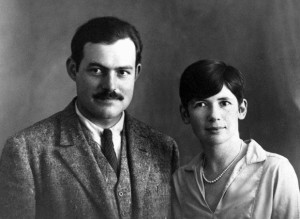Art and Culture
Hemingway’s Havana home to get $900,000 in U.S. improvements
HAVANA: A U.S. foundation will ship nearly $900,000 in supplies to build a state-of-the-art facility to preserve Ernest Hemingway’s books, letters and photos – the first major export of construction materials to Cuba since President Barack Obama loosened the trade embargo on the island.
The Boston-based Finca Vigia Foundation has been trying for years to help Cuba stop thousands of pages of documents from slowly disintegrating in the baking heat and dripping humidity of the sprawling home where the American writer lived and worked outside Havana from 1939 to 1960.
Officials with Cuba’s National Cultural Heritage Council, which runs the Finca Vigia, have been enthusiastic about building a conservation laboratory but said they didn’t have the funds or supplies to do it.
High-quality building materials are virtually impossible to find throughout much of Cuba, with homeowners forced to buy paint and water pumps stolen from government agencies and pay overseas travelers to bring items as large as sinks and kitchen cabinets in their checked luggage.
In state-run hardware stores, a request for an item as mundane as a box of screws can provoke peals of laughter from sales clerks.
The foundation’s proposal to send four shipping containers with as much as $862,000 of materials ranging from nuts and bolts to tools and roofing was approved by the U.S. government in May, after Obama created a series of exemptions to the embargo. The exceptions include permission for Americans to export supplies donated for the purpose of supporting the Cuban people in fields such as science, archaeology and historical preservation.
Cuban architects, engineers and workmen will use the U.
S. supplies and Cuban cement blocks and mortar to construct a 2,400-square-foot, two-story laboratory where thousands of photos, roughly 9,000 books and a huge number of letters to and from Hemingway can be treated and preserved.
“It will make a tremendous difference,” Mary-Jo Adams, executive director of the privately funded Finca Vigia Foundation, which was founded in 2003. “They’ll be able to be kept for decades, if not longer.”
Cuban-American TV home improvement expert Bob Vila, a Finca Vigia Foundation board member, will help oversee the project, Adams said. The head of Cuba’sNational Cultural Heritage Council said she couldn’t make any immediate comment on the project.
The series of exemptions that Obama carved in the embargo a month after his Dec. 17 announcement of detente with Cuba is designed explicitly to help ordinary Cuban citizens and the island’s growing private sector rather than its socialist, single-party government.
The Cuban government retains control of most aspects of life on the island. Obama administration officials acknowledged from the start that it would be impossible to prevent warming ties from helping a state apparatus that the U.S. criticizes for a lack of political and economic freedom.
U.S. tourism to the island is still prohibited by law and critics of Obama’s engagement with Cuba say that it will simply funnel cash to Raul Castro’s government.
The Finca Vigia is one of Havana’s most popular tourist attractions and its entrance fees go to the government, but Adams said the preservation lab wouldn’t be a part of that. “It is not going to attract visitors but it will keep the collection safe.”
Questions about the ethics of a project that works with the Cuban government had, she said, long since dissipated. “It was sensitive probably 10 years ago,” she mused. “It no longer is.”






















